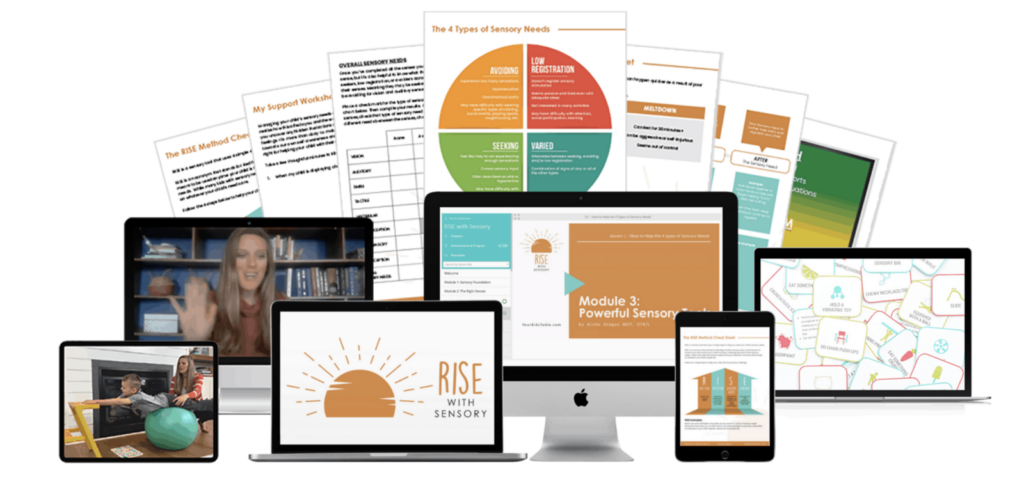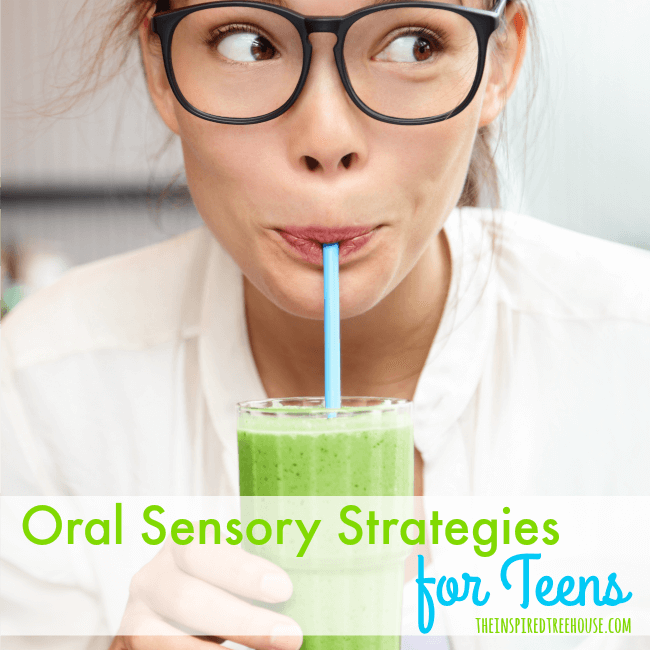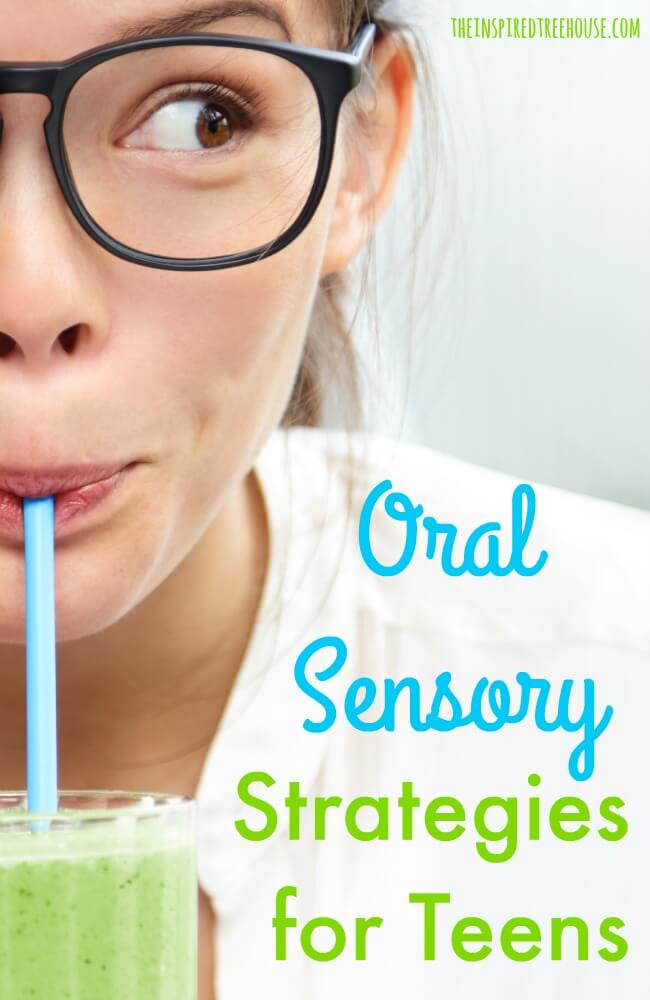Our friend and fellow OT, Courtney Dickinson, is back today with more great information about sensory issues and teens! This time around, she’s tackling olfactory and oral sensory strategies for teens.
*This post contains affiliate links. Read more.
Is your teen a picky eater?
Does he constantly add hot sauces or spices to his foods?
Do smells easily bother her?
Does he seem to constantly need something in his mouth?
If some of these behaviors sound familiar, your teen may be having difficulties with oral sensory and/or olfactory (smell) processing. Often these 2 areas can go together since they are so closely linked. Like other sensory systems, we can be under or over responsive to smell or taste/oral inputs.

RISE With Sensory Course
Are you ready to learn powerful sensory strategies to support kids’ sensory needs so they can RISE to their full potential?
Whether you’re a parent or a professional, this course is for you!
The RISE With Sensory Course is This class is AOTA approved for 7 hours (.7 CEU) and is the perfect starting point for new therapists, or refresher for experienced therapists.
Looking for a streamlined approach for working with kids with sensory concerns and for communicating clearly with parents and caregivers about sensory processing?
Click here to learn more!
Signs of Being Under-responsive to Oral Sensory and Olfactory Input
Teens who are under-responsive to these inputs may seek them out in more intensity or they may appear to have a decreased awareness regarding oral and smell inputs.
-Seeks out intense flavors and/or temperatures
-Doesn’t notice when foods seem to be too hot or cold; may burn self without realizing
-Complains of foods tasting bland, often adds extra flavoring
-Eats very fast; doesn’t seem to consistently chew food
-Chews on non-edibles (erasers, pen tops, shirt collars, etc.)
-Constantly wants gum or candy
-Excessive “snacker”
-Doesn’t seem to notice smells that others do (both bad and good)
Signs of Being Over-responsive to Oral Sensory and Olfactory Input
Teens that are over-sensitive to oral and olfactory input are overwhelmed by this type of sensory information and it is not getting filtered appropriately by their nervous systems. Too much of this input can send them into a “fight/flight/fright” response which may look like avoidance, aggression or even being scared of a new food.
-Picky eater
-Avoids certain textures and/or temperatures
-Doesn’t like spicy, sweet or avoids certain tastes
-Over-sensitive to dental work
-Doesn’t like to brush teeth and/or floss
-Easily bothered by smells
-Gags easily
Olfactory and Oral Sensory Strategies for Teens
What can we do to help our sensory seekers or sensory avoiders? Before we help them, they need to understand what we are doing. Have your teen fill out the checklist to determine if they fit into one of these categories. Once they realize what their sensory profile is, and that there are activities or strategies they can engage in to help their bodies, hopefully they will be on board!
Olfactory and Oral Sensory Strategies for Teens Who are Under-responsive to Input (Oral Sensory Seekers)
-Incorporate extreme flavors/temperatures in meals and snacks (spicy, sour, cold)
-Have extra oral input on hand such as gum, hard candy, beef jerky, and water bottles – check out more great oral sensory snacks here!
-Look into teen chewy necklaces – most appear like typical teen jewelry; Etsy sells a variety of chewy and scented necklaces
-Try vibrating toothbrushes and/or intense mouthwashes like Listerine
-Have spices/hot sauces available at meals
-Try sour candy before an exam or focused time
-Pack healthy snacks with proteins and complex carbs to keep energy levels consistent
-Make sure smoke detectors in house are all working
-Avoid extremely hot foods
Olfactory and Oral Sensory Strategies for Teens Who are Hypersensitive to Input
-Try chewy/crunchy foods as these textures tend to be more organizing and provide calming proprioceptive input
-Be aware of temperature and taste and avoid extremes
-Introduce new foods/smells gradually
-Try a vibrating toothbrush – sometimes the vibration is easier to tolerate than the lighter touch of a typical toothbrush
-Use essential oils to calm and relax (lavender and cedarwood are two that can be calming)
-Use unscented products/detergents
-Incorporate calming music into mealtimes and decrease other extraneous distractions
This concludes my series on sensory strategies for teens! I hope this information was useful for you and the teens in your therapy practice or home. Teens are probably my trickiest students, yet they also teach me the most!
My own children are still babies (2 and 6) and I hope I will be prepared for their teen years through my work with teenaged students.
Check out these popular resources about feeding challenges for kids
How to Help Kids Practice Self-Feeding With Utensils
What is the Oral Sensory System
Oral Sensory Snack Ideas
Tools, Toys & Games to Help Kids With Feeding Challenges
Tips for Picky Eaters

Courtney Dickinson
Latest posts by Courtney Dickinson (see all)
- Olfactory and Oral Sensory Strategies for Teens - August 27, 2016
- Tactile Strategies and Activities for Teens and Older Kids - May 25, 2016
- Sensory Issues in Teens: Movement - April 29, 2016

